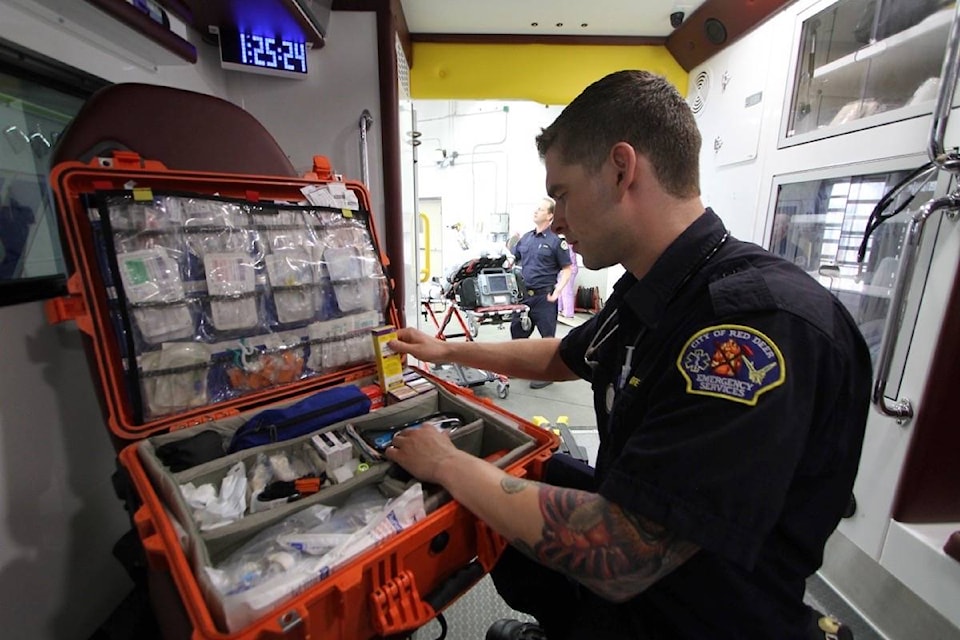Red Deer had the highest rate of EMS service calls for opioid overdoses in the last five months of 2017 and already has one of the highest rates in 2018, according to the latest provincial opioid statistics.
It was the first time emergency medical services data was included in the quarterly Alberta Health’s Opioids and Substances of Misuse reports.
Red Deer EMS responded to 109 calls, a rate of 243.7 per 100,000 population, between August and December compared to other cities. Grande Prairie had the second highest rate at 203.9 and 63 calls.
In the first two months of 2018 Red Deer EMS responded to 34 calls with a rate of 190. Lethbridge had the highest rate at 270.9 and 45 calls.
Overdose service calls also include overdoses that may become fatal.
Damian LaGrange, acting deputy chief with Red Deer EMS, said crews regularly attend overdose calls so the numbers are not a surprise.
“If the first quarter of 2018 is any indication of how the rest of the year is going to go, then we will by far surpass our number of overdoses in 2017 which is really sad,” LaGrange said.
He said the number of overdose calls is a strain on EMS resources in Red Deer and elsewhere in Central Alberta.
Cities like Calgary get more overdose calls in its downtown. While there are no statistics available on where crews are sent in Red Deer, it would likely be the same here. But opioid overdoses happen everywhere in the city, he said.
“These are not isolated just to back alleys and homeless camps.”
LaGrange said EMS is a member of the Red Deer Coalition on the Opioid Crisis Committee that is looking at different ways to address the opioid crisis. Supervised consumption services, which was recently approved as a mobile service that could be available in the city, is just one strategy.
“We need to get ahead of this as a community either through education and prevention. I believe we need to look at the treatment for the addiction and possible mental health issues related to this.
“Our medical first response program, our ambulances, these are all reactionary to this crisis. There needs to be a proactive, preventative programs in place to get ahead of this.”
In 2016 and 2017, Red Deer had the highest rate of opioid-related deaths for opioids other than fentanyl.
When it comes to just fentanyl, the city had the highest fatality rate in 2016 and the second highest rate in 2017. So far in 2018, Red Deer again has the highest rate.
szielinski@reddeeradvocate.com
Like us on Facebook and follow us on Twitter
